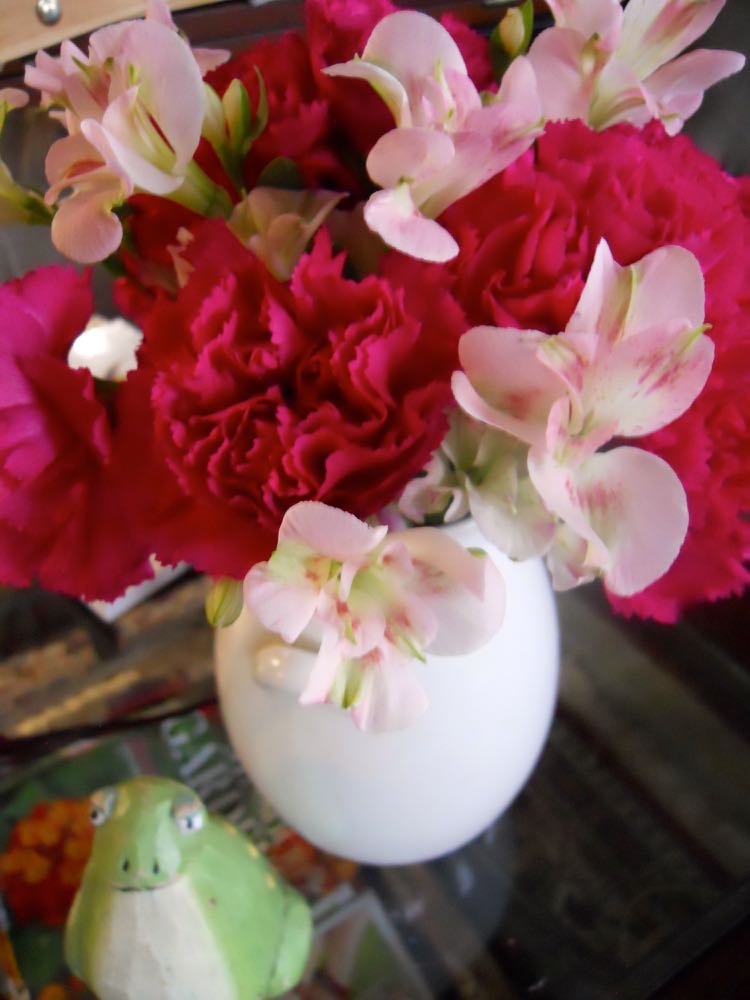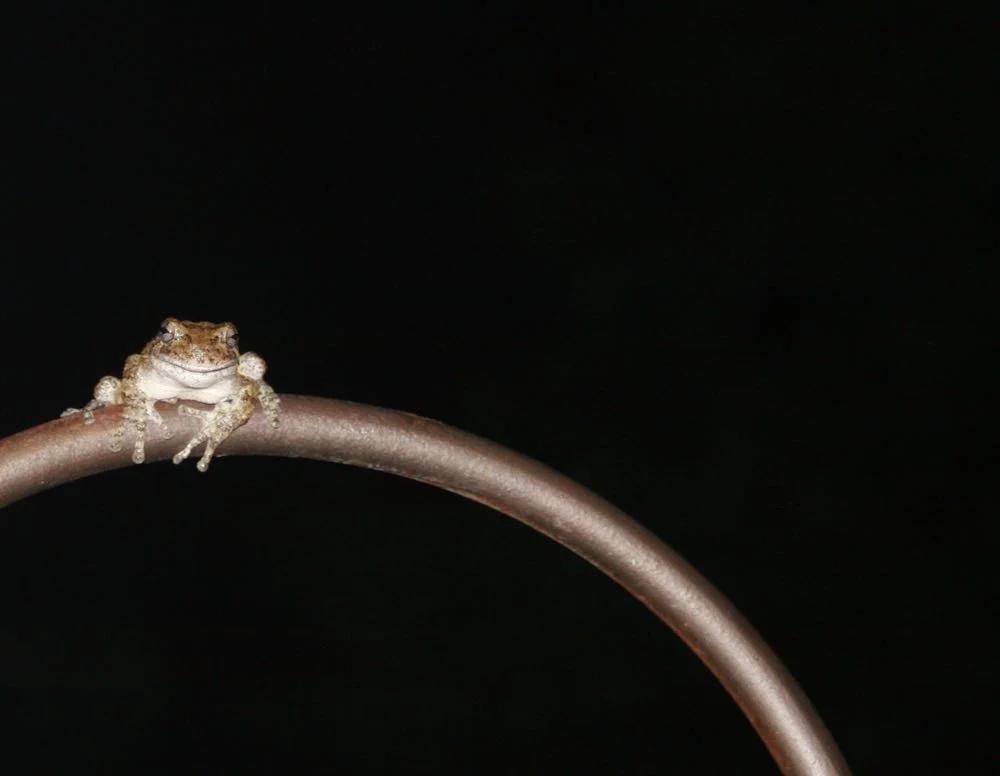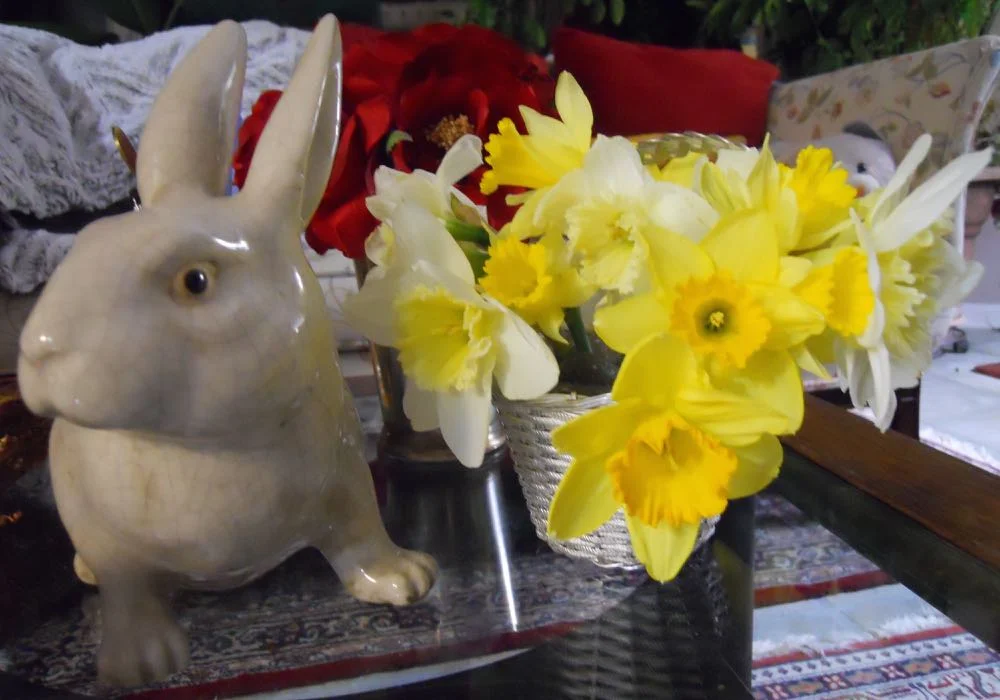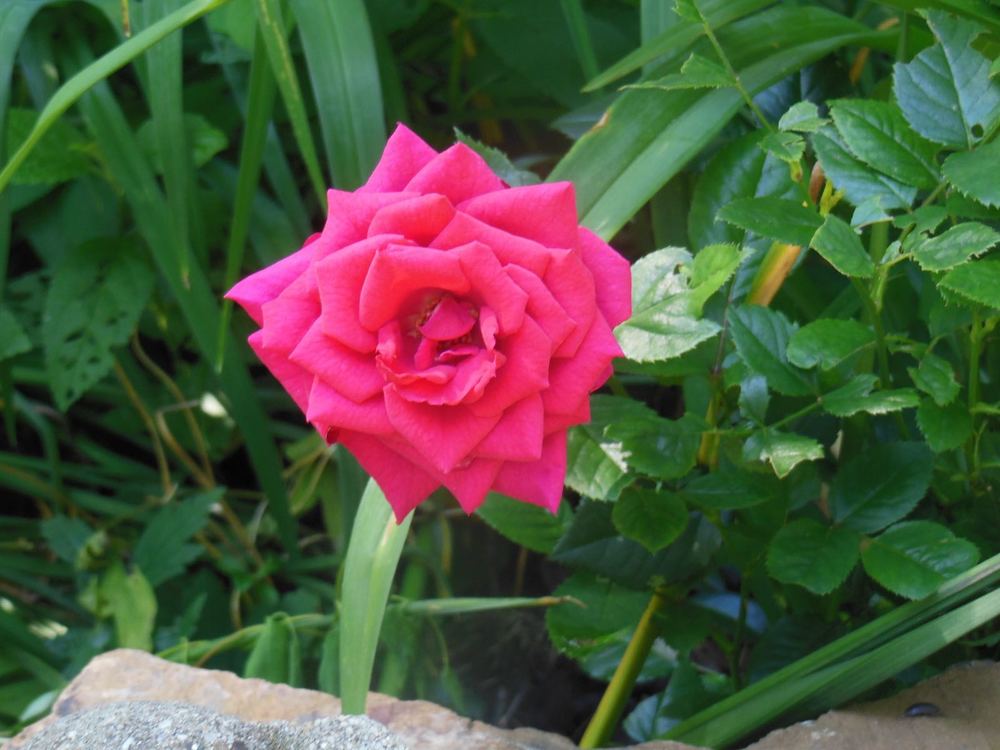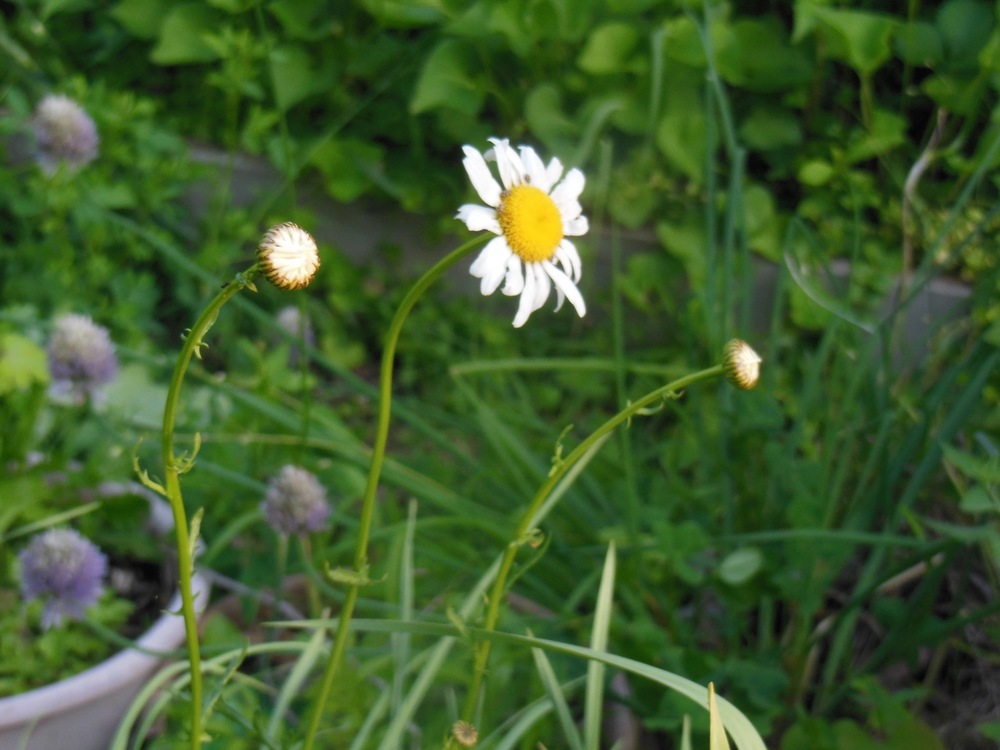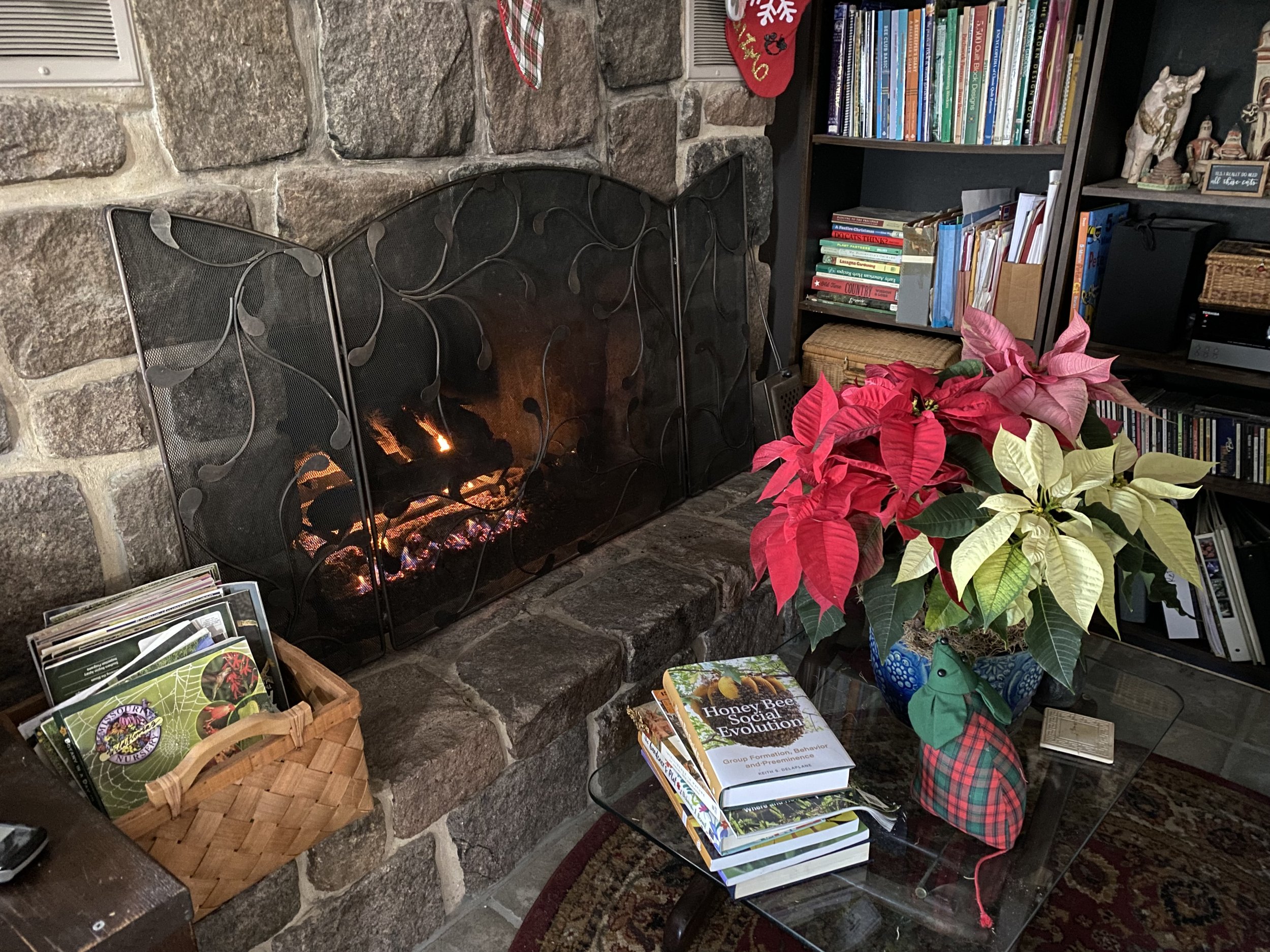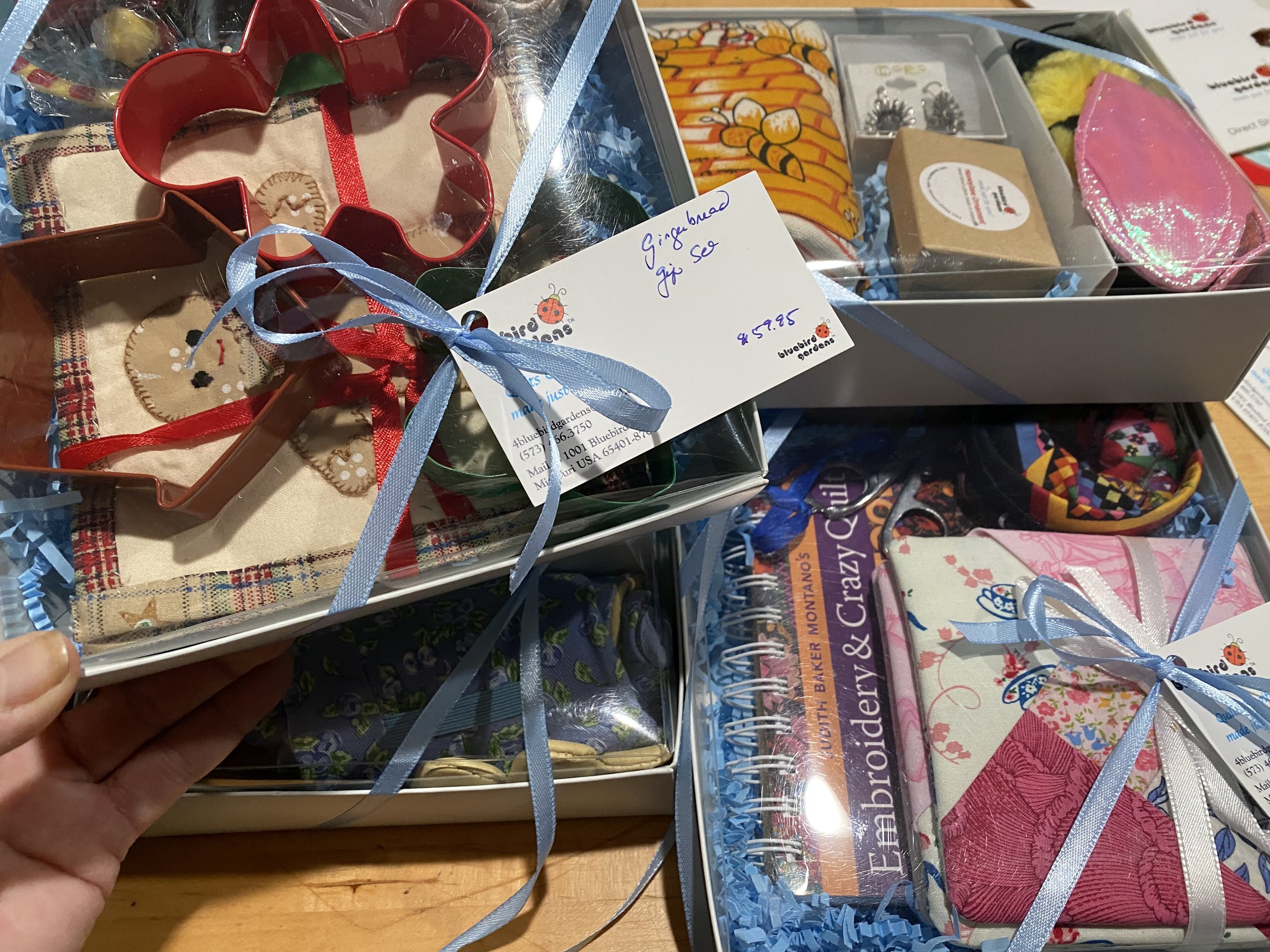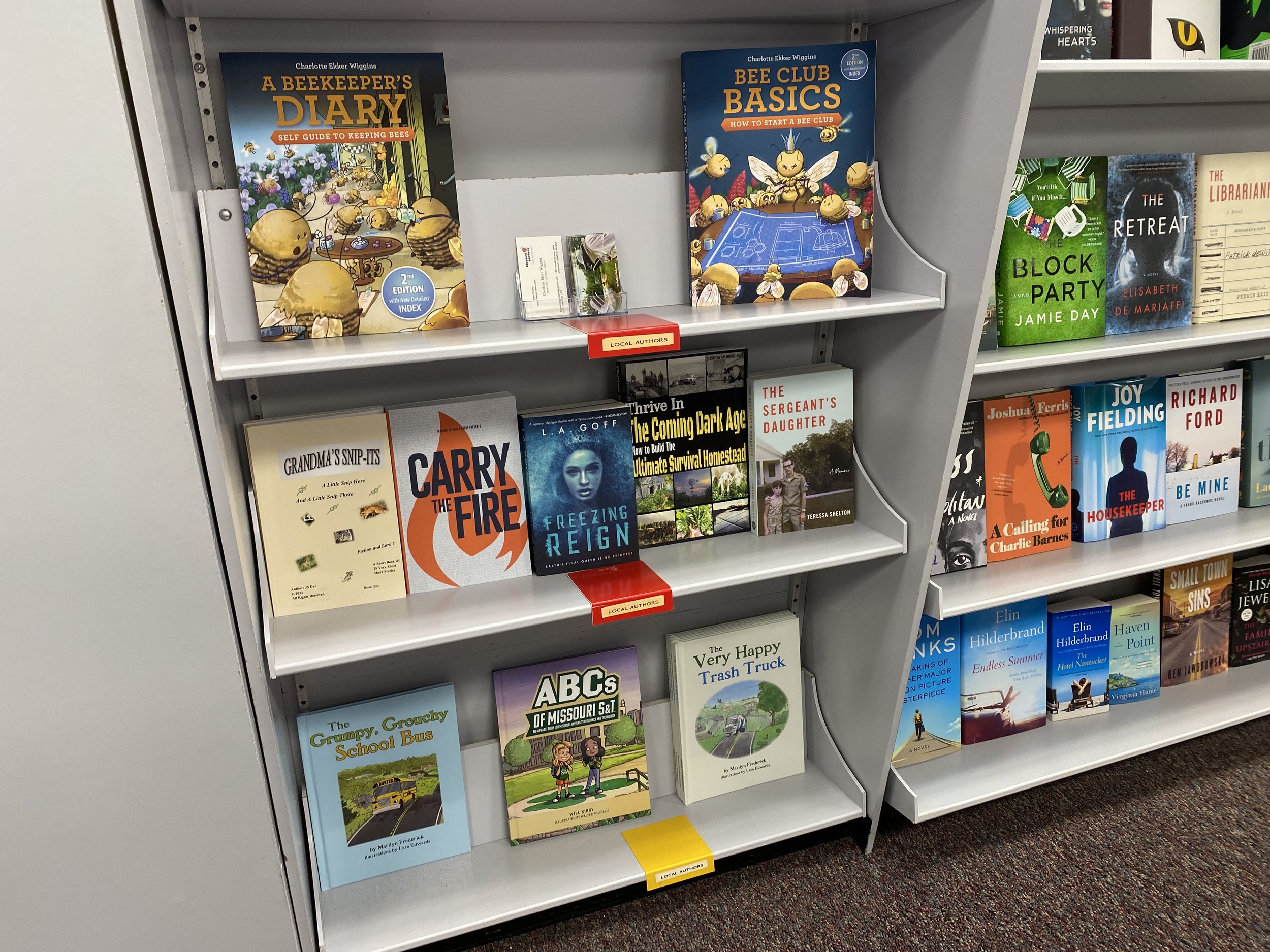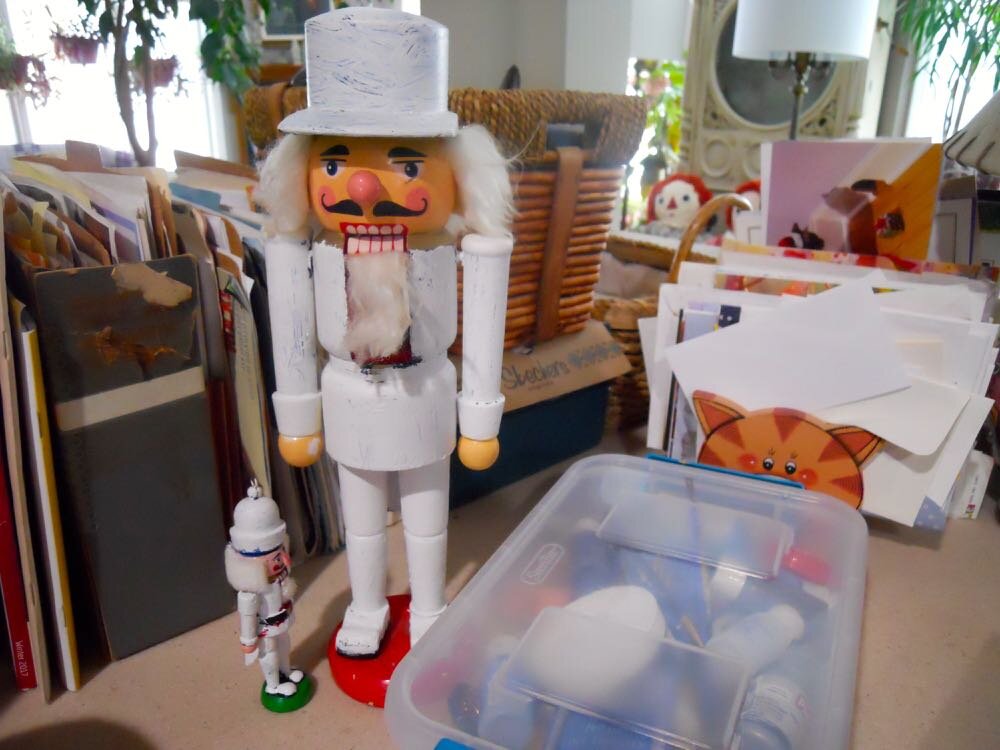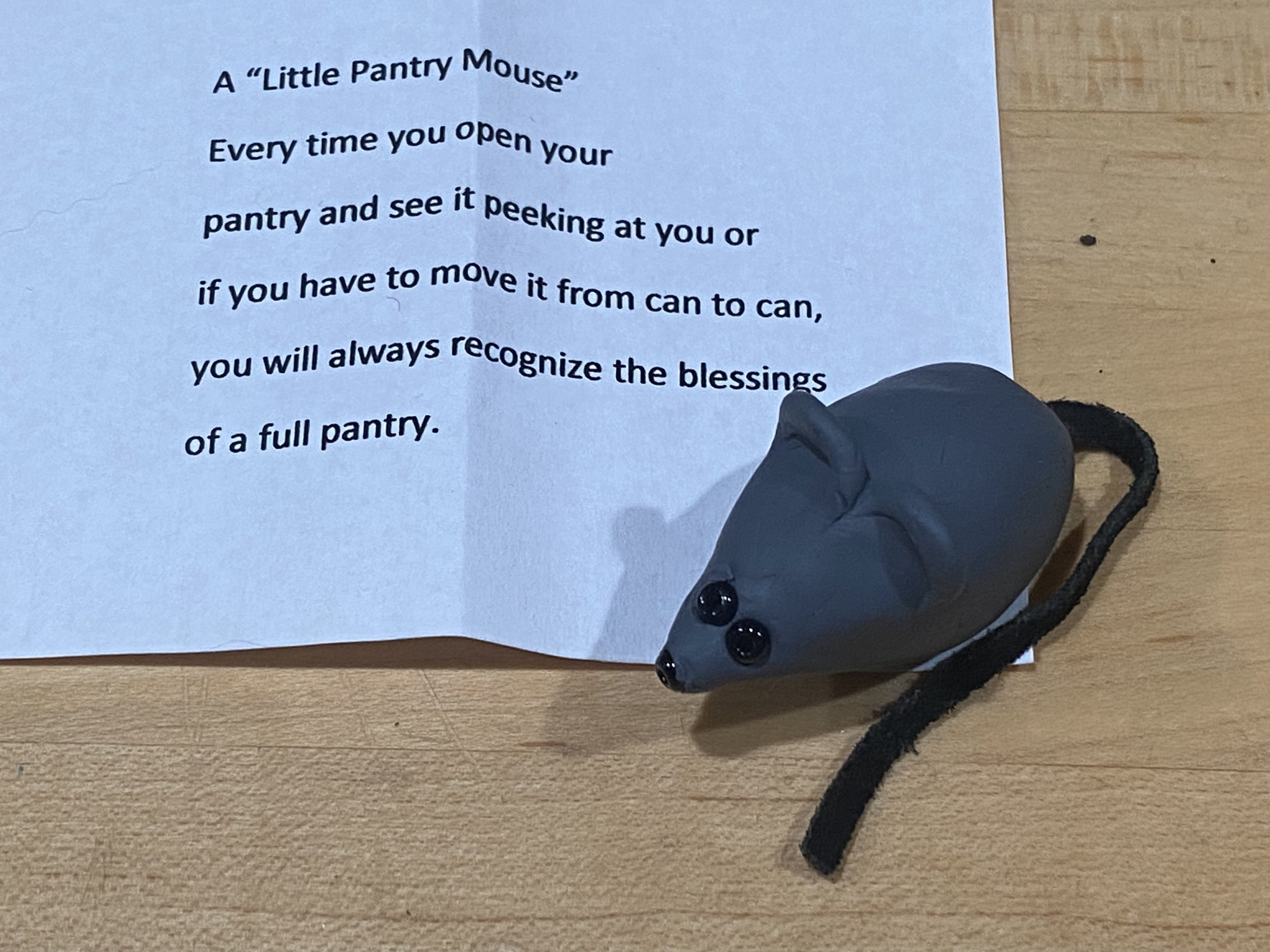White Rose Gift Bouquet
/White Rose Gift Bouquet
A friend's wife and daughter were under the weather so I picked a small bouquet to cheer them up. John F. Kennedy fragrant white hybrid tea roses, purple forget-me-nots and white garlic chives all in a porcelain watering can I picked up at a local thrift shop.
Punishing summer weather this year gave way to a couple of weeks of cool temperatures, prompting my garden to produce flowers again. Most plants go into survival mode when temperatures go over 90F for any length of time.
I pick up these small containers when I find them so I have them handy to make gift flowers.
Pick up small containers you can use as flower vases for gift flowers from your garden.
I did explain to the husband/Dad that the roses will smell wonderful but there will also be a garlic whiff from the garlic chives. Garlic chives are wonderful bee plants and one of the few plants that bloom profusely in August and September in hot weather conditions.
If you have to choose between a small and large container, choose a smaller one. Small flower containers are more versatile than large ones. Most people can make a spot for a small flower vase versus something larger and it takes less flowers to make a bouquet.
Pick roses early morning still in bud form so they can have a longer vase life.
Pick roses and the other flowers early morning. Use sharp scissors to cut them at a 45 degree angle and get them into water immediately. I sometimes take a jar with water into the garden when I am cutting flowers so I can get the cut ones immediately hydrated.
Also make sure the flowers are compatible. Daffodils, for example, don't get along with other flowers unless they are kept in a vase with water to drain toxins first.
Another benefit of making gift flower bouquets, it gives me a chance to see my garden from a different perspective. Garden dreams are a delightful way to enjoy a garden, too!
Charlotte









